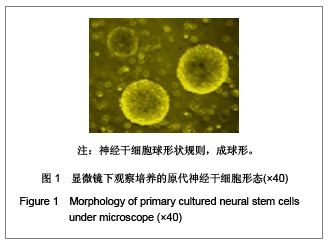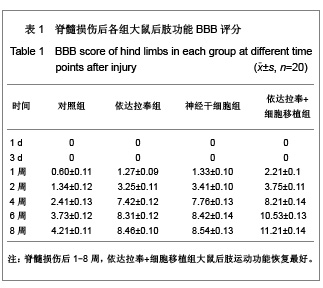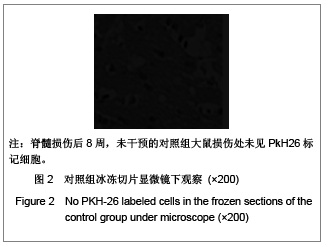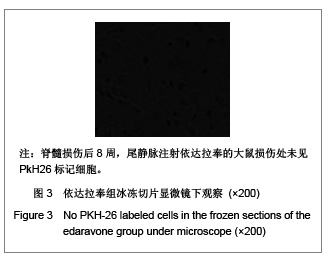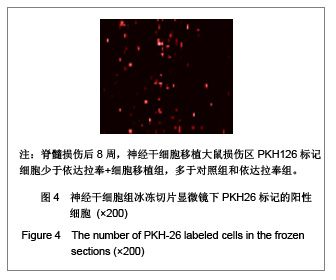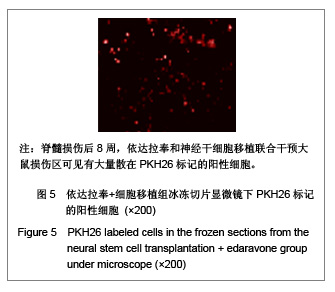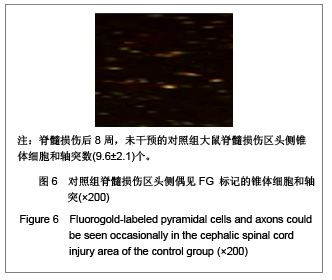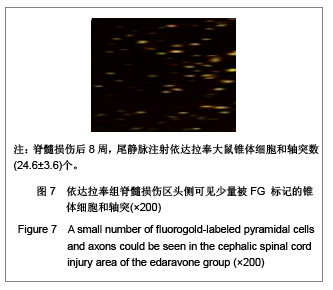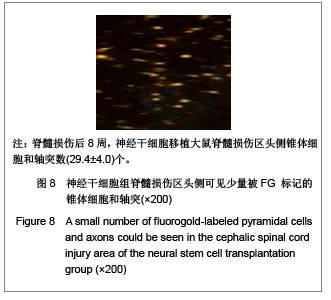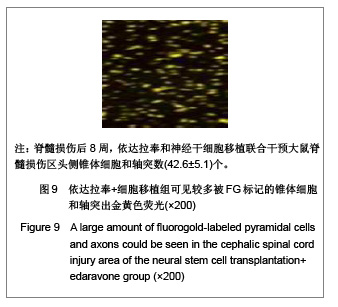| [1] Weaver LC, Dekaban GA, Brown A. Anti-CD11d monoclonal antibody treatment for rat spinal cord compression injury.Experimental Neurology.2012;233(2):606-611.[2] Carter LM, McMahon SB, Bradbury EJ. Bradbury. Delayed treatment with Chondroitinase ABC reverses chronic atrophy of rubrospinal neurons following spinal cord injury. Experimental Neurology.2011;228(1):149-156.[3] Duchossoy Y, David S, Baulieu EE, et al. Treatment of experimental spinal cord injury with 3β-methoxy- pregnenolone. Brain Research.2011;1403:57-66.[4] Morizane K, Ogata T, Morino T, et al. A novel thermoelectric cooling device using Peltier modules for inducing local hypothermia of the spinal cord: The effect of local electrically controlled cooling for the treatment of spinal cord injuries in conscious rats. Neurosci Res. 2012;72(3):279-282[5] Yang JD,Li GF,Wang JC,et al.Zhonghua Shiyong Zhenduan yu Zhiliao Zazhi. 2011,25(10):979-980,983. 杨建东,李广峰,王静成,等.甲泼尼龙对脊髓损伤大鼠氧自由基的影响[J].中华实用诊断与治疗杂志, 2011,25(10):979-980,983.[6] Sun YM,Wang QP,Lin FG,et al.Zhonghua Wuli Yixue yu Kangfu Zazhi. 2010,9:654-656. 孙永明,王庆鹏,林凡国,等.高压氧治疗大鼠脊髓损伤的疗效及其对脂质过氧化反应的影响[J].中华物理医学与康复杂志, 2010,9: 654-656.[7] He S,Zhang WQ,Zhu J,et al.Changchun Zhongyiyao Daxue Xuebao.2010;26(3):332-333. 何爽,张万强,朱嘉,等.髓复康对恒河猴脊髓半横断损伤后自由基变化的调节作用[J].长春中医药大学学报,2010, 26(3):332-333.[8] Wang Q, Chen Q, Ding Q, et al. Sevoflurane Postconditioning Attenuates Spinal Cord Reperfusion Injury Through Free Radicals-Mediated Up-Regulation of Antioxidant Enzymes in Rabbits. J Surg Res. 2011;169(2):292-300. [9] Liu S, Qu Y, Stewart TJ, et al. Embryonic stem cells differentiate into oligodendrocytes and myelinate in culture and after spinal cord transplantation. Proc Natl Acad Sci U S A. 2000;97(11):6126-6131.[10] Blits B, Kitay BM, Farahvar A, et al. Lentiviral vector-mediated transduction of neural progenitor cells before implantation into injured spinal cord and brain to detect their migration, deliver neurotrophic factors and repair tissue. Restor Neurol Neurosci. 2005;23(5-6):313-324.[11] Mura M, Toyama Y, Okano H. Transplantation of neural stem cells for spinal cord injury. Rinsho Shinkeigaku. 2005;45(11): 874-876.[12] Kamei N, Oishi Y, Tanaka N, et al. Neural progenitor cells promote corticospinal axon growth in organotypic co-cultures. Neuroreport.2004;15(17):2579-2583.[13] Dasari VR, Spomar DG, Gondi CS, et al. Axonal remyelination by cord blood stem cells after spinal cord injury. J Neurotrauma. 2007;24(2):391-410.[14] Uji Y, Yamamoto H, Mori T, Akabori H, et al.Edaravone improves the survival of rats subjected to hemorrhagic shock without resuscitation. Surgery Today. 2008;38( 5): 476-477.[15] Hisano K, Watanabe M, Morimoto Y. Protective effects of the free radical scavenger edaravone against glutamate neurotoxicity in nearly pure neuronal culture. J Anesth. 2009; 23(3):363-369.[16] Ye R, Kong X, Yang Q, et al.Ginsenoside Rd in Experimental Stroke: Superior Neuroprotective Efficacy with a Wide Therapeutic Window.Neurotherapeutics.2011;8(3):515-525.[17] Ono H, Nishijima Y, Adachi N, et al. Open AccessImproved brain MRI indices in the acute brain stem infarct sites treated with hydroxyl radical scavengers, Edaravone and hydrogen, as compared to Edaravone alone. Med Gas Res.2011;1(1): 12.[18] Wang D, Zhang JJ, Yang ZX. Treatment of spinal cord injury by transplanting neural stem cells with NgR gene silencing. Zhongguo Wei Zhong Bing Ji Jiu Yi Xue. 2010;22(1): 28-31.[19] Lü HZ, Hu JG. Expression of bone morphogenetic proteins-2/4 in neural stem cells and their lineages. Acta Neurobiol Exp (Wars). 2009;69(4):441-447. |
